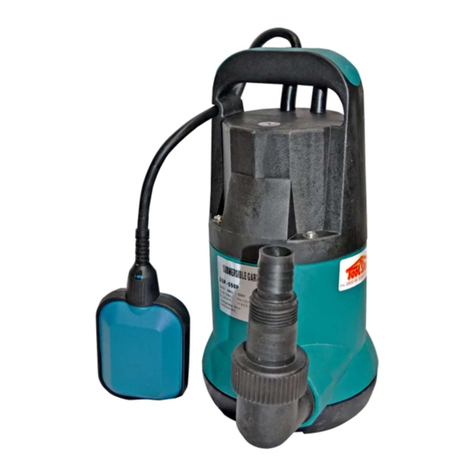
89
OPERATION MANUAL OPERATION MANUAL
WWW.THETOOLSHED.CO.NZWWW.THETOOLSHED.CO.NZ
SAFETY GUIDELINES
DANGER
GASOLINE AND GASOLINE VAPOURS
ARE HIGHLY FLAMMABLE AND
EXPLOSIVE. Fire or explosion can cause
severe burns or death.
Gasoline & Vapours When Adding or Removing
Gasoline
When Starting the Engine
• Gasoline is highly ammable and explosive.
• Gasoline can cause a re or explosion if
ignited.
• Gasoline is a liquid fuel, but its vapours can
ignite.
• Gasoline is a skin irritant and needs to be
cleaned up immediately if spilled on skin or
clothes.
• Gasoline has a distinctive odour; this will help
detect potential leaks quickly.
• In any petroleum gas re, you should not
attempt to extinguish the ames unless it
can be done in such a way by turning the
fuel supply valve OFF. This is because if a re
is extinguished and a supply of fuel is not
turned OFF, then an explosion hazard could
be created.
• Never ll the gas tank to capacity as gasoline
needs room to expand if temperature rises.
• Never use gasoline that is stale, contami-
nated, or mixed. Avoid getting contaminants,
dirt or water in the fuel tank.
• DO NOT light or smoke cigarettes.
• Turn the engine o and let it cool for at least
two minutes before removing the gasoline
cap. Loosen the cap slowly to relieve pressure
in the tank.
• Only ll or drain gasoline outdoors in a
well-ventilated area.
• DO NOT pump gasoline directly into the
engine at the gas station. Use an approved
container to transfer fuel to the engine.
• DO NOT overll the gasoline tank.
• Always keep gasoline away from sparks,
open ames, pilot lights, heat, and other
sources of ignition.
• DO NOT rell the fuel tank while the engine
is running or while the engine is still hot.
• When spills of fuel or oil occur, they must be
cleaned up immediately. Dispose of uids
and cleaning materials as per local regula-
tions.
• DO NOT attempt to start a damaged engine.
• Make certain that the gasoline cap, air lter,
spark plug, fuel lines, and exhaust system are
properly in place.
• Allow spilled gasoline to evaporate fully
before attempting to start the engine.
• Make certain that the water pump is resting
rmly on level ground.
• Spark from a removed spark plug wire can
result in re or electrical shock.
SAFETY GUIDELINES
Fuel & Engine Safety
Operate this machine outdoors only
in a well-ventilated area and point the
exhaust away from you.
WARNING
• DO NOT operate the machine inside any
building, including garages, basements,
crawlspaces and sheds, enclosures, or
compartments, including the storage
compartment of a recreational vehicle.
• DO NOT allow exhaust fumes to enter a
conned area through windows, doors,
vents, or other openings.
• NEVER use inside a home or garage, EVEN
IF doors and windows are open. ONLY use
OUTSIDE and far away from windows, doors,
and vents.
WARNING
Using an engine indoors CAN KILL YOU
IN MINUTES. Engine exhaust contains
Carbon Monoxide. This is a poison you
cannot see or smell.
• Engine exhaust contains carbon monoxide, a
colourless, odourless, poison gas. Breathing
carbon monoxide will cause nausea, dizzi-
ness, fainting or death. If you start to feel
dizzy or weak, get fresh air immediately.
Service
• Have your tools and machinery serviced
at The ToolShed with ToolShed replace-
ment parts. This will ensure that the safety
of the power tool or machine is maintained.
WARNING
The warnings and precautions
discussed in this manual cannot cover
all possible conditions and situations
that may occur. It must be understood
by the operator that common sense
and caution are factors which cannot
be built into this product, but must be
supplied by the operator.
WARNING
DO NOT immerse the water pump in
water.
• It is not possible to cover every conceivable
situation you can face. Always exercise care
and use your common sense. If you get into
a situation where you feel unsafe, stop and
seek expert advise. Contact your dealer,
service agent, or an experienced user. Do not
attempt any task you feel unsure of!
Always Use Common Sense





























